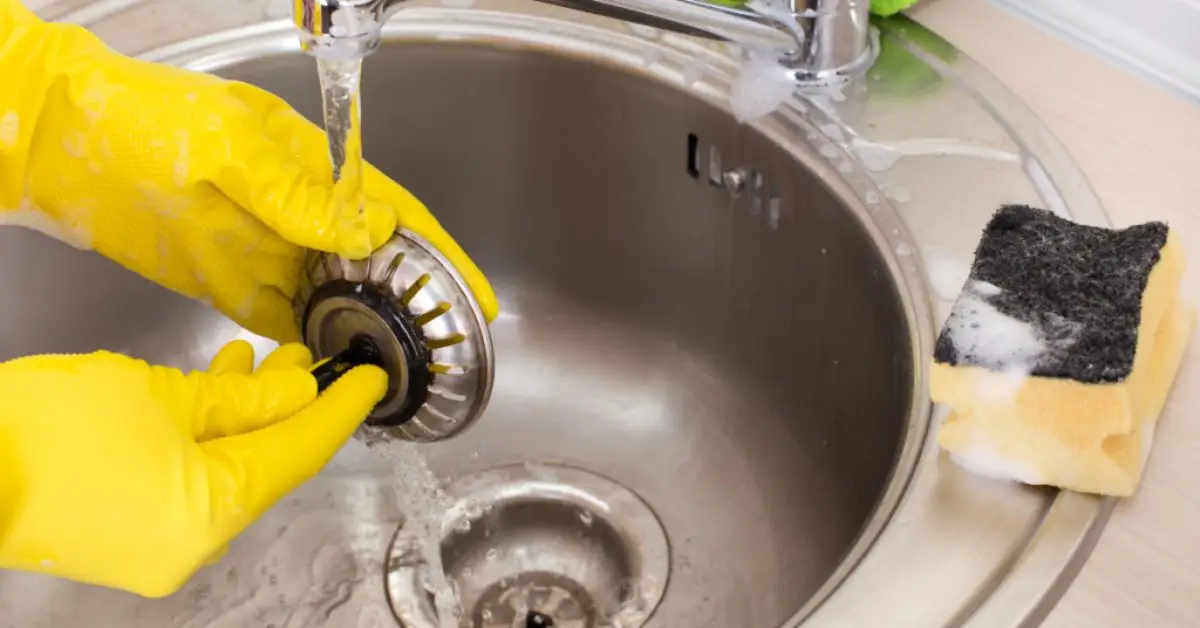The 9 Most Overlooked Kitchen Spots That Are Actually the Dirtiest
I always assumed my kitchen was immaculate until I took a closer look. I then understood that some of the dirtiest, most germ-filled areas are concealed in plain sight. These unseen bacteria can transform a clean kitchen into a health hazard without my knowledge, from the sponge I use daily to the handles I touch numerous times.
The ease with which these viruses may infect our meals and utensils and impact everything we eat astounded me even more. What’s the worst?The majority of these areas are totally disregarded during ordinary cleaning procedures.
I’ll go over the nine most insidious germ havens in your kitchen in this post and demonstrate how to quickly and thoroughly clean them. Simple, doable actions you can do right now to maintain a safe, hygienic, and genuinely clean kitchen—no fancy words, no frightening warnings.
By the conclusion, you will not only be aware of the locations of these hidden germs, but you will also have a well-defined plan of action to address them, restoring your trust in cooking and eating.
1. Kitchen Sponges: The Germiest Item in Your Kitchen
Before I discovered that my sponge is essentially an agerm magnet, I thought it was just a harmless cleaning tool. Bacteria like Salmonella and E. coli thrive on sponges because they are warm, moist, and packed with microscopic food particles. To be honest, when I initially understood how many bacteria may be hiding in a sponge I touch on a daily basis, it scared me.
I now take the following steps to protect mine:
-
Microwave it for 30 seconds
: Just make sure it s wet before microwaving, or it could catch fire. -
Replace every 1 2 weeks
: Old sponges are basically bacterial incubators. -
Rinse and wring thoroughly
after each use: Minimizes dampness and slows bacterial growth.
The bacteria in my kitchen is much reduced by following these easy procedures, which you can begin doing today as well. See Homes & Gardens’ kitchen sponge recommendations for a brief overview of why this is so crucial.
By taking these precautions, you can lessen the transmission of bacteria in your kitchen and keep your hands and food safer.
2. Sink Drains: A Breeding Ground for Bacteria
Before I noticed a strange odor one day, I never really paid much attention to my sink drain. At that point, I recognized that the residual food particles and continuous dampness were essentially creating a petri dish for germs.
I follow this regimen to keep it tidy:
-
Monthly cleaning
with a mixture of
baking soda and vinegar
: Pour cup baking soda down the drain, then follow with cup vinegar. Let it fizz for 15 minutes and rinse with hot water. -
Scrub the stopper and edges
: Those hidden nooks are where gunk loves to hide. -
Flush with boiling water weekly
: Helps prevent buildup before it becomes a problem.
I can assure you that this easy practice keeps my sink smelling clean and stops bacteria from getting onto my hands and dishes.
3. Refrigerator Compartments: Overlooked Germ Hotspots
I’ve always considered my kitchen’s refrigerator to be among the cleanest places, but the sections dedicated to meat and vegetables give a different impression. Pathogens such as Salmonella and E. coli can thrive in raw meat fluids, spills, and condensation.
Here’s how I protect my refrigerator:
-
Monthly deep clean
with a mild detergent or
baking soda solution
: Wipe down all shelves and compartments. -
Separate raw and cooked foods
: Prevents cross-contamination. And if you re thinking of updating your kitchen layout while improving hygiene, check out6 kitchen renovation mistakes that ll destroy your budget and how to avoid them
to plan smart and safe upgrades.
-
Check expiration dates regularly
: Old items often harbor bacteria you can t see.
Every month, I make it a practice to clean my refrigerator because it’s a tiny effort that has a big impact on food safety.
keeps your food safe and stops dangerous microorganisms from infecting it.
4. Coffee Makers: A Haven for Bacteria
Although I enjoy my coffee in the morning, I was shocked to discover that my coffee machine might be harboring bacteria. It is the perfect place for germs to grow because of the warmth and moisture, and no one wants that in their morning cup.
Here’s how I approach it:
-
Run a vinegar and water cycle
: Fill the reservoir with a 1:1 mixture, run the brew cycle, then rinse thoroughly with plain water. -
Clean removable parts
: Wash the carafe, basket, and lid weekly with hot soapy water. -
Dry completely
: Leaving parts wet encourages bacterial growth.
By following these easy procedures, you can improve the taste of your coffee and keep your coffee maker safe.
5. Dishwasher Filters: An Often Neglected Area
Although I always thought dishwashers cleaned themselves, their filters reveal otherwise. If the filter isn’t cleaned, food particles become trapped over time, and mold and bacteria might develop.
My routine is as follows:
-
Remove the filter
every 3 6 months. -
Rinse under hot water
and scrub gently with a soft brush if needed. -
Check for buildup
before each deep clean to prevent clogs and odors.
This keeps my dishwasher operating smoothly and stops bacteria from getting onto my dishes. See Southern Living for comprehensive dishwasher hygiene advice.
6. Cabinet Handles and Knobs: High-Touch Areas
It wasn’t until I started routinely cleaning the knobs and handles that I noticed how much dirt and bacteria may build up on them. Germs can spread from your hands to the next person who uses them each time you contact these surfaces.
This is what I do:
-
Wipe down every few weeks
with a vinegar-water mixture or all-purpose cleaner. -
Pay special attention to high-touch spots
: corners, edges, and drawer pulls. -
Dry thoroughly
to prevent moisture buildup.
Although it might not seem like much, keeping these areas clean greatly lowers the amount of bacteria that spreads throughout the kitchen. To make organizing and maintaining your cabinets even simpler, while you’re at it, check out these 15 expert-approved kitchen cabinet hacks for clutter-free living. makes your kitchen a safer place for everyone by preventing the spread of germs through common touch points.
7. Trash Cans: An Unseen Source of Germs
I always assumed that throwing out the trash was sufficient, but I now know that trash cans can retain bacteria and offensive odors even when bags are changed frequently. Germs thrive in the ideal conditions created by damp garbage or leftover spills.
Here’s how I go about it:
-
Clean the interior regularly
with an all-purpose cleaner or disinfectant. -
Sprinkle baking soda
at the bottom to neutralize odors and prevent bacterial growth. -
Rinse and dry thoroughly
before inserting a new bag.
By doing this, I prevent bacteria from getting onto my hands and countertops and maintain a fresh scent in my kitchen.
8. Reusable Grocery Bags: A Hidden Germ Source
I’m all for cutting back on plastic, but reusable shopping bags have a secret drawback: if they aren’t cleaned, they can store bacteria and odors. Your vegetables and kitchen surfaces may become contaminated by the same microorganisms.
This is what I do:
-
Wash bags regularly
, either in the washing machine or by hand with hot water and soap. -
Dry completely
to prevent bacteria from growing in damp fabric. -
Rotate bags
so you re not constantly using the same one.
This little practice significantly lowers the possibility of cross-contamination in my kitchen.
9. Spice Jars: Overlooked Vessels of Contamination
Before realizing that raw meat, vegetables, or even sticky fingers might readily contaminate my spice jars, I didn’t give them much thought. Everything you cook may be impacted by germs that remain on the lid or rim.
My routine is as follows:
-
Wipe the tops and lids
of jars regularly with a damp cloth or disinfectant wipe. -
Clean jars monthly
with warm, soapy water if they get sticky or dusty. -
Store away from sinks or cooking splashes
to reduce exposure.
Spice jar cleanliness is a minor detail that has a significant effect on kitchen hygiene. See The Spruce for additional advice.
Conclusion: A Cleaner, Healthier Kitchen Awaits
As I reflect on all of these secret germ havens, I see how simple it is to ignore commonplace areas in our kitchens that subtly harbor bacteria. Every component of your kitchen, from sponges to spice jars, contributes to general hygiene, and cleaning them with little, regular actions can have a significant impact on your health and mental well-being.
I urge you to begin putting these suggestions into practice right now. Wipe down high-touch areas, sterilize sink drains, clean your sponges, and remember to bring reusable bags and your coffee maker. You’ll notice a safer and more pleasurable cooking environment in addition to a cleaner kitchen. Think about adding ten kitchen-friendly houseplants that will make you regret not purchasing them sooner to improve the atmosphere and hygiene of your kitchen. They can help filter the air and give your room a more energizing sense.
Which hidden microbe has startled you the most? I would love to know.Leave a comment below with your personal cleaning advice for the kitchen. For additional instructions and techniques that make keeping your home clean easy and stress-free, visit Build Like New. It offers more realistic, practical advice on how to keep your home safe and fresh.
Disclaimer: This page is solely meant to provide general information. When cleaning, always adhere to safety precautions and appliance directions. Build Like New disclaims all liability for any harm or damage.
Contents Table
-
1. Kitchen Sponges: The Germiest Item in Your Kitchen
-
2. Sink Drains: A Breeding Ground for Bacteria
-
3. Refrigerator Compartments: Overlooked Germ Hotspots
-
4. Coffee Makers: A Haven for Bacteria
-
5. Dishwasher Filters: An Often Neglected Area
-
6. Cabinet Handles and Knobs: High-Touch Areas
-
7. Trash Cans: An Unseen Source of Germs
-
8. Reusable Grocery Bags: A Hidden Germ Source
-
9. Spice Jars: Overlooked Vessels of Contamination
-
Conclusion: A Cleaner, Healthier Kitchen Awaits




